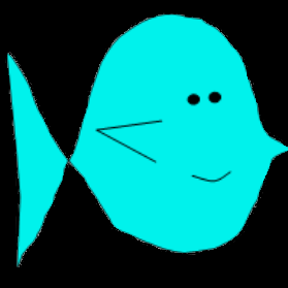Welcome to the Onshape forum! Ask questions and join in the discussions about everything Onshape.
First time visiting? Here are some places to start:- Looking for a certain topic? Check out the categories filter or use Search (upper right).
- Need support? Ask a question to our Community Support category.
- Please submit support tickets for bugs but you can request improvements in the Product Feedback category.
- Be respectful, on topic and if you see a problem, Flag it.
If you would like to contact our Community Manager personally, feel free to send a private message or an email.
Export to 3D formats
 joseph_newcomer
Member Posts: 101 ✭✭✭
joseph_newcomer
Member Posts: 101 ✭✭✭
in General
I have done a design that is to be cut with a 2 1/2-D CNC router. The router software accepts .dxf, .dwg, .eps. .ai and .svg files. None of which OnShape exports. Note that 3D FDM printers are not the only devices that can be driven with a 3D design.
If there is a path between what OnShape exports and what VCarve Pro accepts, I'd appreciate knowing about it.
If there is a path between what OnShape exports and what VCarve Pro accepts, I'd appreciate knowing about it.
0
Comments
If you are in a part studio you can right click on a face and export as DXF. It works well with VCarve and Aspire
Vetric switches to PartWorks3D for STL formats as well as some other formats.
Have used both for a Shop Bot CNC router.
Why not export the model as an STL or OBJ it looks like Vcarve pro will take either of those.
I’ve got a little piece of survey equipment that puts out 3D DXF’s
Every once in a while, I take it out and charge it up and use it a little bit to make sure the thing doesn’t die on me
Here’s a small file created by that device
If you look in the upper right of this GIF, you’ll see the name that this device gave to this file
It starts off by calling the file a 3D file
Then it gives the date
The time
Then the .dxf file format extension
As the crosshair cursor moves from point to point — notice the coordinates in the upper left. Notice how there are points sticking up above the XY plane (the blue grid)
(While you can work with 3D elements in DXF, it only fully supports 2D objects.) ???
Or is this in relation to only standard DXF?
The GIF below takes a little time to start rotating
This GIF shows that you can create objects of different type throughout 3D space, in one file. And then export as a DXF to where the DXF will retain the solids, the surfaces, and the wire objects
You can then import that DXF into another CAD program where you will have the same in one file
Solids
Surfaces
Wire objects
Notice that some objects are sitting on the XY plane, and some are not. Some are sitting up above the XY plane.
These objects that were imported into the second CAD program, are sitting in the same exact location that they were when created and then exported out of the first CAD program
“Did you get that Pa?”
“They don’t use those doggone blasted 3D DXF’s for nothing ! — AND I MEAN NOTHING !!! “
“Yeah, I got that Ma.”
—————————————
I used to love those old Ma & Pa Kettle shows
Alright — enough dumb levity
As far as the extent to which 3D DXF files are in use, I have no idea.
I just don’t want people walking away with the thought that DXF’s are only 2D and have been that way for ages – because that is not the case
DXF’s are 3D capable and have been for decades
I took a CAD app and made a file with solids, surfaces, and wires. Then exported as version 12 DXF. Here is the pop-up menu for the VERSIONS of DXF that were in the export dialogue
Now best I can tell, version 12 DXF was probably between the year of 92 and 95 as far as the release date. Because autocad 12 was released in 92. And LT 95 probably coincided with AutoCAD Light 95. So …
Anyway — then I imported that v12 DXF into another CAD program. And exported that as a SAT and brought that into Onshape, and Onshape brought in the solids, and the surfaces and the wires
From a 3D CAD file
To v12 DXF export (92 to 95 file format)
To import of that DXF
To SAT export
To SAT import
and after all that, there are still solids, surfaces, and wires in 3D space
Best I can tell, it looks like DXF started supporting 3D not long after AutoCAD started supporting solids. Solids were introduced to AutoCAD in 1990
Incidentally — a short web search came up with this. It looks like the 3D DXF is not gonna work with VCarve
https://forum.vectric.com/viewtopic.php?f=2&t=35916&p=262483&hilit=3D+file+formats#p262483
Just about impossible for me to keep from laughing